Where can I find the MySQL's logs (errors, queries, etc.) in the phpMyAdmin interface?
6 Answers
I had the same problem of @rutherford, today the new phpMyAdmin's 3.4.11.1 GUI is different, so I figure out it's better if someone improves the answers with updated info.
Full mysql logs can be found in:
"Status"->"Binary Log"
This is the answer, doesn't matter if you're using MAMP, XAMPP, LAMP, etc.
- 31,877
- 16
- 137
- 115
- 1,878
- 30
- 43
Open your PHPMyAdmin, don't select any database and look for Binary Log tab .
You can select different logs from a drop down list and press GO Button to view them.
- 5,994
- 7
- 46
- 69
-
20I have Databases,SQL,Status,Variables,Charsets,Engines,Processes,Export & Import tabs but no 'Binary Log' - am I looking in the correct location? – citronic Jun 14 '10 at 18:48
-
HUmm, I have Privileges and Binary log between Engines and Processes. are you using WAMP? Which version? Are you loged in with root? – Tasawer Khan Jun 14 '10 at 18:54
-
1ah, probably restricted by my hosts then. I will ask them, thankyou for your help. – citronic Jun 14 '10 at 19:26
-
9I can't find a `Binary Log tab` ! nor any tab related to logs ! – Muhammad Gelbana Sep 05 '12 at 11:30
-
10@MuhammadGelbana, it's under the 'Status' tab. If you click on that and then look at the list items above 'Server Traffic' you'll see 'Binary Log' between 'Threads' and 'Temporary data'. – MillerMedia May 09 '13 at 22:03
I am using phpMyAdmin version 4.2.11. At the time of writing, my Status tab looks like this (a few options expanded; note "Current settings", bottom right):

Note, there are no directly visible "features" that allow for the enabling of things such as slow_query_log. So, I went digging on the internet because UI-oriented answers will only be relevant to a particular release and, therefore, will quickly become out of date. So, what do you do if you don't see a relevant answer, above?
As this article explains, you can run a global query to enable or disable the slow_query_log et al. The queries for enabling and disabling these logs are not difficult, so don't be afraid of them, e.g.
SET GLOBAL slow_query_log = 'ON';
From here, phpMyAdmin is pretty helpful and a bit of Googling will get you up to speed in no time. For instance, after I ran the above query, I can go back to the "Instructions/Setup" option under the Status tab's Monitor window and see this (note the further instructions):

- 6,291
- 6
- 40
- 69
-
4This answer looked good as it was exactly my case. Unfortunately, it won't always work as you need SUPER privileges: "Error SQL query: SET GLOBAL slow_query_log = 'ON' #1227 - Access denied; you need (at least one of) the SUPER privilege(s) for this operation" – Alejandro Lozdziejski May 16 '19 at 20:13
In phpMyAdmin 4.0, you go to Status > Monitor. In there you can enable the slow query log and general log, see a live monitor, select a portion of the graph, see the related queries and analyse them.

- 1,969
- 4
- 28
- 58
- 8,879
- 3
- 29
- 29
If you are using XAMPP as your server, you'll find a logs directory as a child of the XAMPP directory. If you have not tried XAMPP, which runs on any system (Windows, Mac OS & Linux) find more here: http://www.apachefriends.org/en/xampp.html
- 10,431
- 11
- 53
- 83
Use performance_schema database and the tables:
- events_statements_current
- events_statemenets_history
- events_statemenets_history_long
Check the manual here
- 41
- 7